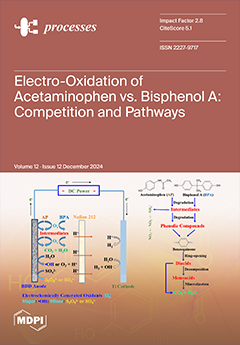To ensure the safe utilization of hydrogen-enriched natural gas (HENG), it is essential to explore effective explosion suppressants to prevent and mitigate potential explosions. This study experimentally investigates the impact of ultrafine water mist containing K
2CO
3 additives on the explosion characteristics of methane/hydrogen/air premixed combustion. The influence of varying K
2CO
3 concentrations on pressure rise rates and flame propagation was analyzed across different hydrogen blending ratios. The results demonstrate that the addition of K
2CO
3 to ultrafine water mist significantly enhances its suppression effects. The peak overpressure decreased by 41.60%, 56.15%, 64.94%, and 72.98%, the flame speed decreased by 30.66%, 70.56%, 46.72%, and 65.65%, and the flame propagation time was prolonged by 25%, 20.83%, 22.92%, and 18.75%, respectively, for different hydrogen blending ratios, showing a similar trend. However, the suppression effectiveness diminishes under high hydrogen blending ratios and low K
2CO
3 concentrations. Further analysis using thermogravimetric infrared spectroscopy and chemical kinetics simulations revealed that the heat release rate and the generation rate of active free radicals significantly decrease after the addition of K
2CO
3 to the ultrafine water mist. The recombination cycle of KOH → K → KOH, formed by reactions (R211: K + OH + M = KOH + M) and (R259: H + KOH = K + H
2O), continuously combines active free radicals (·O, ·OH) into stable product molecules, such as H
2O. However, at low K
2CO
3 concentrations, reaction R211, which suppresses laminar combustion sensitivity and consumes a larger quantity of active free radicals, does not dominate, leading to a reduced suppression effect of K
2CO
3 ultrafine water mist. Several factors during the reaction process also adversely affect the performance of K
2CO
3-containing ultrafine water mist. These factors include the premature onset of laminar flame instability at low K
2CO
3 concentrations, the increased flame-front propagation speed due to the addition of hydrogen to methane, which shortens the residence time of K
2CO
3 in the reaction zone, and the turbulence caused by unvaporized droplets.
Full article





